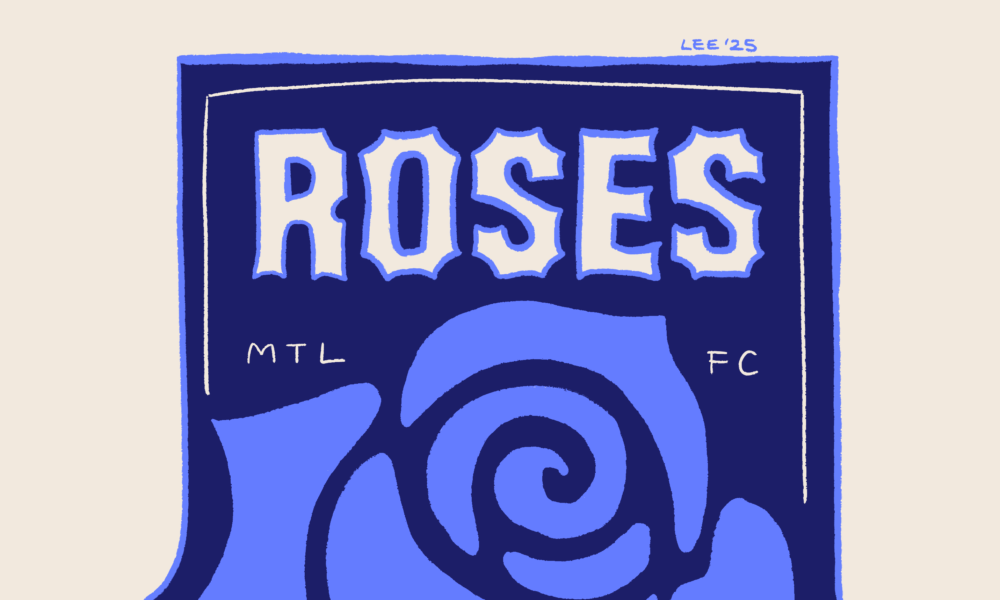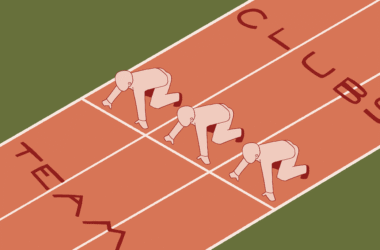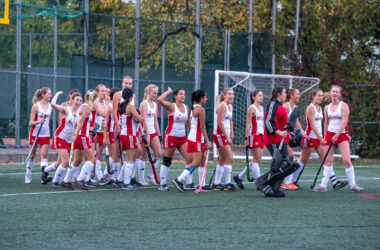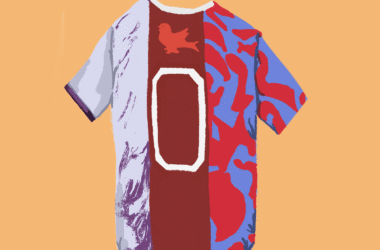Montreal Roses FC, one of the inaugural clubs of the newly established Northern Super League (NSL), announced the signings of McGill Women’s Soccer alumni Mara Bouchard (BA ‘24) and Stephanie Hill (MSc ‘24, BSc ‘23) on Jan. 9.
Both Bouchard and Hill initially planned to pursue professional soccer following their McGill graduation, either in Europe or elsewhere. However, the announcement of the NSL—as well as the news that one of its teams would be based in Montreal—opened up a new pathway for them.
“[The announcement] hyped me up,” Hill told The Tribune, when asked about her initial reaction to the NSL’s creation. “It gave me hope and made me think about it for real […] would I have gone and played in Europe if not for this league? Probably, but that comes with a lot of secondary and tertiary thought processes. Now that there is a Canadian league, it makes that thought process a little more simple.”
The scouting procedure started while the players were still at McGill, with scouts attending Martlets games since the start of the season. Hill noted that NSL teams have appeared to be very committed to securing university talent, with scouts present at university games both in Canada and internationally.
Bouchard and Hill both expressed their excitement to meet more of their teammates and the Roses staff, especially as both the roster and the staff list continue to evolve. The players’ first few days as Roses included a quick meeting, but at the time of their interview with The Tribune, Bouchard and Hill had otherwise met very few people associated with the team, as their signing was announced a couple of days before the weekend.
“I’m just excited to see who the Roses are, and to get to become a team and feel like a team,” Hill said.
The Roses currently have a 10-player roster that includes French international Charlotte Bilbault and former SC Freiburg goalkeeper Gabrielle Lambert. NSL teams will kick off their season in April 2025.
As the start of the season approaches, Bouchard shared her hopes for her first professional contract.
“As it’s my first pro contract, I am not putting any expectations on myself, because I don’t know what to expect,” she said. “It’s mostly about bringing this Québecois side of playing at home and bringing these people in [….] creating this strong bond with fans is a main goal for me, in my first season especially.”
Similarly, Hill explained her desire to foster what she described as a “sentiment d’appartenance” (‘sense of belonging’). She aims to bring everything she learned from playing at McGill into her professional career and give it her all this season.
With the establishment of the NSL, Canadian university graduates now have a stronger pathway to professional soccer, reducing the need to move abroad, especially in the early stages of their careers.
“The league in the United States is not really looking at university players here in Canada,” Bouchard said. “[The NSL is] creating this opportunity for people here to have this experience, and then eventually, if you want to, take the step to go [abroad].”
“It was about time to demonstrate just how much talent there is here, and the fact that there is a league has really made that tangible,” Hill added. “The potential of women’s sports, and of us, as soccer players, to reach that higher level, makes it possible.”
There are also several Canadian players in the American National Women’s Soccer League who have returned home to sign for an NSL team—most notably, former Seattle Reign FC player Quinn, who has over 100 caps was part of the gold-winning Canada side during the 2020 Olympics.
These Canadian players now have the opportunity to represent their home cities and to play in a local setting. Furthermore, soccer fans and players growing up in the country have women’s players to look up to, even beyond the national team.
“When going pro in another country, you are mainly going there for soccer, and not thinking very largely about inspiring people,” Bouchard said. “But with staying here—yes, there is playing, but there is also inspiring the generations under us.”









